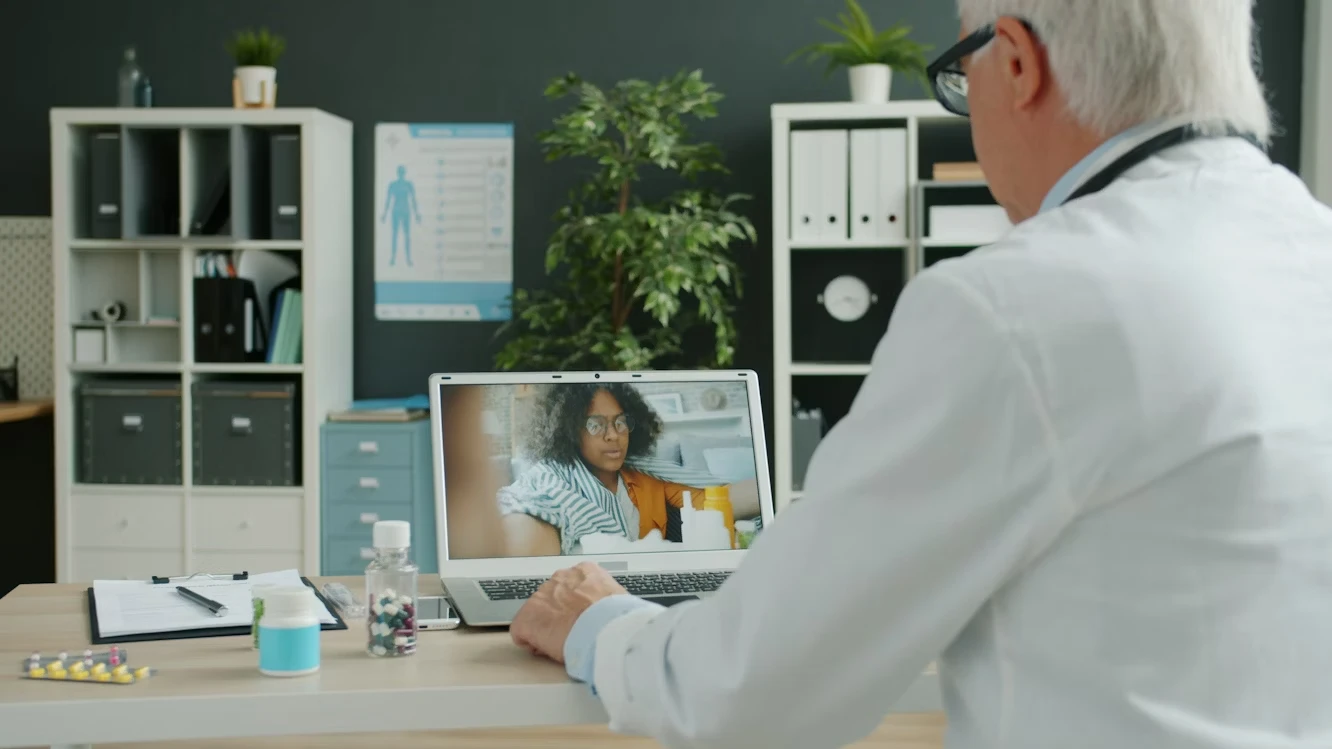
This website uses cookies
We use Cookies to ensure better performance, recognize your repeat visits and preferences, as well as to measure the effectiveness of campaigns and analyze traffic. For these reasons, we may share your site usage data with our analytics partners. Please, view our Cookie Policy to learn more about Cookies. By clicking «Allow all cookies», you consent to the use of ALL Cookies unless you disable them at any time.
Healthcare administered in real-time via cutting-edge tech was first floated as far back as 1879. Fast-forward to 1925, and sci-fi publisher Hugo Gernsback confidently predicted a future where physicians would use radio and TV to assess their patients.
The doctor-patient relationship in telemedicine and mobile health has been evolving for the better part of a century, and in 2019 it’s set to take another leap forward.
What is telemedicine?
Telemedicine specifically refers to clinical applications of telehealth – a two-way, real-time communication between a patient and their healthcare provider.
Telemedicine has helped to extend the reach of providers to those unable to afford or access real-world, face-to-face care. This has proven to be especially popular for those in rural settings (15% of the US population lives in rural areas; only 10% of the country’s physicians practice in these areas), while those in poorer urban settings lacking in healthcare infrastructure have also warmed to its potential.
Cost, convenience, and growth
According to a government report, a staggering $200 billion of the $3.2 trillion spent on healthcare in the US in 2015 was avoidable. Unnecessary ER visits and hospitalizations soon add up, but telemedicine offers a cost-effective and convenient alternative.
Some 350,000 Americans were already in tune with the convenience offered by telemedicine services in 2014, and this was projected to grow to 7 million by 2018. Globally, the telemedicine market was anticipated to grow at a compound rate of 14.3 percent between 2014 and 2020.
Common use cases
In modern times, telemedicine has been used in the treatment and management of a number of conditions, specialisms, and tasks, including:
Mental Health – Due to a shortage of trained professionals in certain geographic areas, mental health services can be delivered via telecommunications to great effect, thanks to the personal and conversational nature of the technology.
Rehabilitation – Post-surgical follow-up and post-hospital discharge can be made a great deal easier by quickly touching base on certain rehab activities – especially if it doesn’t require a further physical examination. Making sure patients understand their aftercare routine and have their questions answered in a timely manner can save them an uncomfortable trip to the doctor’s office for what amounts to a brief consultation.
Medication Management – Again, a short discussion that would take up valuable office time for a doctor, and require travel for the patient, can be boiled down to a quick chat via a telemedicine application.
Minor Urgent Care – Once symptoms have been established, treating a fever or minor ailment often won’t require more than prescribing medication or self-care. This can cut down on unnecessary visits to the ER or doctor’s offices.
So, how does telemedicine help support the doctor-patient relationship?
In reality, the question could be framed: Does telemedicine help the doctor-patient relationship at all?
Its detractors would have you believe that, no, it does not. They claim that the convenience telemedicine affords its patients comes at the cost of quality of care. That there’s more benefit of making the trip to the doctor’s office than simply answering a few questions on a video call.
Critics would argue that telemedicine makes medicine more impersonal, despite its immediacy. Yes, doctors can easily get in touch with their patients, but they can’t actually touch them. And if they can’t physically examine them, how can they accurately diagnose them?
But that’s too narrow a stance to take. Although telemedicine may be the only form of care available to many people given their circumstances (location, affordability, etc.), it shouldn’t be viewed as a blanket replacement for all face-to-face care.
Instead, it should be considered a cost-effective, time-saving supplement to such care – especially involving minor conditions, like infections, or administrative tasks, such as managing prescriptions.
The benefits of telemedicine
Advocates of telemedicine technology can point to a number of benefits, many of which have come to the fore against an increasingly bleak backdrop. The decline of rural healthcare, declining rural populations, the rising number of elderly and uninsured patients, and the lack of specialty services have combined to increase the demand for telemedicine services.
As a result, telemedicine can help save time, reduce costs, improve minor ailment care, and increase access to specialists for poor rural and urban communities alike. Unnecessary ER visits are minimized, while doctor-patient communication is improved, leading to fewer hospital readmissions, and more patients following their prescribed courses of treatment.
Delivering effective telemedicine solutions
The key challenges involved in delivering an effective telemedicine solution can be outlined as:
Overcoming the impersonally of care;
Improving lines of communication between patient and physician;
And implementing simplified patient intake, documentation, and secure in-app payment.
Technorely encountered these challenges when developing Sniffle, two telemedicine applications available on iOS and Android, and via the web.
The issue faced by many telemedicine companies is that they remove an element of control where the patient is concerned, connecting them with unfamiliar on-call doctors or healthcare providers. This just won’t do. Trust is vital for effective telemedicine care.
For Sniffle, we overcame this challenge by allowing patients to select and schedule appointments with the physician of their choice, meaning the potential exists to build a relationship through the platform and enjoy the benefits that come with the continuity of care.
The doctor then simply contacts the patient at an agreed-upon time. This allows the patient to skip the travel and wait time associated with a visit to the doctor’s office.
Lines of communication are also improved thanks to the secure video conferencing and messaging platforms available on both apps. Users can interact with physicians, sharing non-emergency symptoms with confidence. Sniffle even allows physicians to prescribe medications from within the app and also directs the patient to their nearest pharmacy.
Lastly, simple patient intake, documentation, and secure in-app payment takes the hassle out of appointments and billing for both the physician and the patient.
The medical history, complaint (with symptoms), HIPAA release and informed consent are delivered prior to the appointment. Then, during the live call, the diagnosis is recorded and can be securely stored and shared. Finally, the payment (agreed prior to the call) is collected from the patient and safely deposited into the physician’s account. And all without leaving the comfort of their home or office.
In summary
Perhaps one day, in the not-so-distant future, telemedicine will fully overcome the challenge of impersonal care. Virtual reality and tactile technology may allow for a more thorough examination, despite the constraints of distance.
But for the here and now, telemedicine has a major part to play in supporting the doctor-patient relationship. Smart and seamless applications like Sniffle allow physicians to effectively supplement face-to-face consultations and better help those unable to access or afford mainstream medicine.
By making healthcare more convenient, accessible, and continuous, telemedicine can further strengthen the doctor-patient relationship, and elevate the quality of care for everyone.
We helped Sniffle, and we can help you too! If you have a telemedicine app idea, get in touch today to discuss it with our team.





